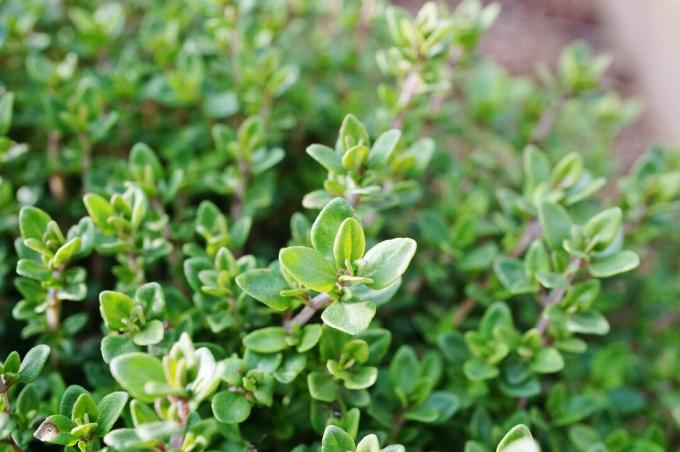Thyme is very useful as a medicinal and aromatic plant. We will show you what you need to consider for the correct cultivation in your own garden.

The real thyme (Thymus vulgaris) is a heat-loving subshrub originating on the European Mediterranean coast. In addition to him, more than 200 other species belong to the genus of thyme (Thymus). The diversity is correspondingly large. It ranges from crawling tiny creatures that stay smaller than 10 cm to exotic smells and tastes that are on Caraway seed, Lemon or ginger recall. The real thyme is especially known for its healing essential oil - the thyme oil. However, so that you can benefit from this, a few small things must be observed for the successful cultivation of real thyme in your own garden.
Growing thyme - step by step
-
Location: With real thyme, the key to success is right at the start. The location is the most important thing to successfully crown the cultivation of the evergreen subshrub. The Mediterranean mint family prefers dry and well-drained soil. This can also be very stony and calcareous. In calcareous soils, however, not all nutrients are freely available for the plant due to the high pH value. With thyme this can quickly lead to iron deficiency symptoms. Then the youngest leaves first turn yellow, with the leaf veins remaining conspicuously green. Simple methods to lower the soil pH somewhat and to make the iron available again are, for example, the incorporation of coffee grounds or humus based on conifers.
If only loamy soil is available, it is better to avoid growing thyme in the bed. With a little effort, however, these heavy, watery soils could also be prepared for the medicinal herb. A deep incorporation of compost every spring and the sowing of deep-rooted plants, which are suitable as green manure, in autumn loosens the soil structure sustainably.
A culture of the thyme in the pot is of course also possible. However, it is important to ensure that the selected substrate has a sand content of around 30%. Here, too, permeability is the top priority.


- Drying: shoots 10 to 15 cm long are cut off, bundled and hung upside down. A dark and dry room is ideal for this, so that the essential oils are preserved as much as possible during the drying process.
- Freezing: The small leaves are carefully plucked from the thyme shoots, then washed off and are now ready for the freezer. They can now be removed as required.
- Pickling: Fresh or dried shoots can be soaked in oil or vinegar. At the same time, you produce oil or vinegar with a spicy thyme note. It is important that the shoots are completely enclosed by the liquid. Mold formation occurs when there is contact with air.


I studied horticulture and I am a real village child. I grow herbs, sweet fruits and vegetables, using only organic products. In addition to my love for nature, I like to cook for my life - preferably with fresh vegetables from my garden.
Favorite fruits: elderberries and raspberries
Favorite vegetables: black cabbage, artichokes and asparagus
Previous posts

The aromatic herb refines sweet desserts, sauces or punch bowls in spring. When and how to ..

The herb with the inconspicuous flower appears every spring in gardens and deciduous forests. How one..

Mint gives off its refreshing aroma, especially when dried and as a tea. Everything to the right ..

